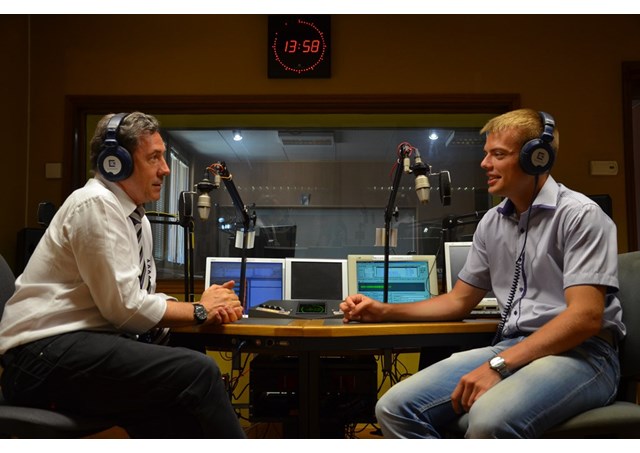
Peace and war: impressions of Ukraine

(Vatican Radio) The image of Ukraine is of a country at war. Yet, in Kiev, Lviv or Dniepropetrovsk there are no sounds of war. There are no rebels and weapons. It’s easy to forget about the conflict in the east - at least until you meet a soldier at the railway station on his way to or from the front. It’s interesting that Ukraine tries to promote itself as a country with a developing economy. It tries but it doesn’t always succeed.
Listen to Oleksii Kovalenko's full interview with Sean-Patrick Lovett:
Internationally, war has become Ukraine’s second name. The Ukrainian Institute of World Policy held a survey in 2015 among the residents of the six largest European countries - Italy, Germany, France, Spain, Britain and Poland. The main research question was: “What do Europeans think about Ukraine?” The answers showed generally negative associations.
Several years ago most people weren’t even able to say where Ukraine is located (“Ukraine is part of Russia, isn’t it?”). A few years ago this was the opinion of people in countries with higher incomes than Ukrainians. Then in 2013, Ukrainians ranked last in terms of salaries among European countries. For two years Ukrainian incomes didn’t improve, but there is more awareness about this important issue now. Although the price of this recognition has been very high: the conflict in the east of Ukraine that has taken thousands of lives.
Seventy-three percent of respondents in the survey associated Ukraine with “war”, “Russia” and “poverty”. Only 15 percent responded with positive answers like: “football”, “beautiful girls”, “the Klitschko brothers”, “European country” “neighboring country” and “beautiful country”.
There is a reason for this: since the Maidan protests and the start of the conflict in the east, the European press has been full of headlines like: “Life in Ukraine's rebel-held Donetsk”, “Ukraine warns army to be ready to repel 'full scale' Russian invasion”, “Ukraine risks resurgence of fighting” or “Putin's War: The Ukraine Cease-Fire That Never Was”.
Headlines like these confirm the impression that Ukraine is gripped by war, that it is dangerous to be there, that peace in Ukraine is not possible and that in the near future it will be still dangerous to be there. With this mindset it is difficult to imagine that in the city of Mariupol, for example, which is close to the war, Ukrainians go to work, stroll down the streets and live normal lives.
“I know about Mariupol. How is the war going there now?” – asked the young Neapolitan man on the Spanish Steps in Rome. He had heard about it and read about it, but was surprised to know that there is no war in Mariupol. Ukrainian authorities often claim that there is a full-scale war with Russia. The world's media pick up the story and read headlines like this: “Threat of war between Ukraine and Russia”.
The other impression is that “Ukraine as a non-soviet country with a fast developing economy”. Unfortunately, that idea is a utopia. In fact, the World Policy survey didn’t associate Ukraine with words like “reforms” or “growing economy”. A year has passed since the announcement of Ukrainian reforms, but most of them have not been implemented. The country is on the verge of default and corruption scandals still erupt in Kiev from time to time.
When the world's media gets tired of talking about the war with Russia, they will say that Kiev took a lot of credit, but ignored the chance to change their country. Then Ukraine runs the risk of becoming a country-victim of “fallen high hopes and broken promises”. After some time everyone will forget about it. “War” cannot become a Ukrainian brand. “War” is not a brand but a reality. It’s time for Ukraine to face this reality and to show that 93% of its territory can live in peace.
By Oleksii Kovalenko
| All the contents on this site are copyrighted ©. |


